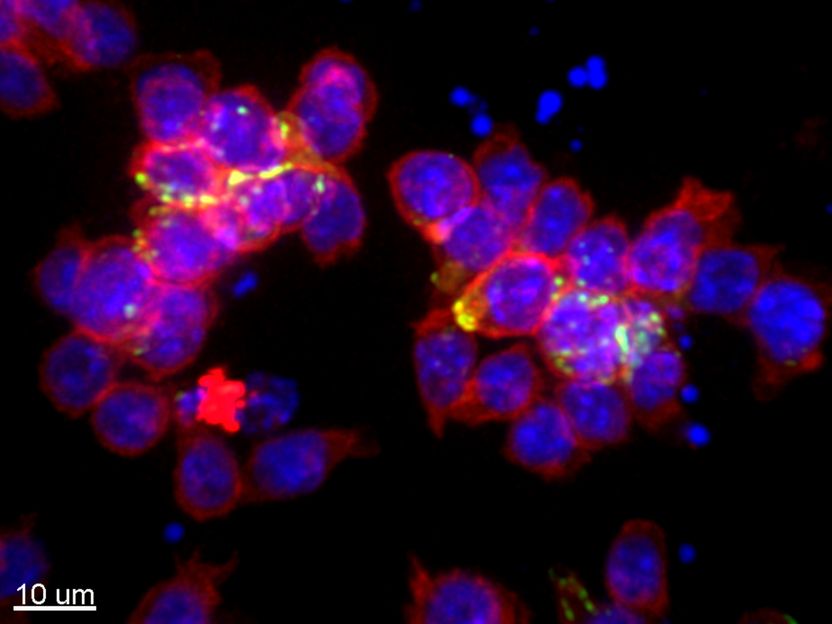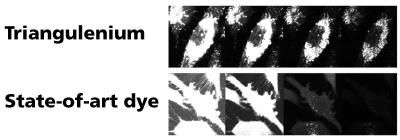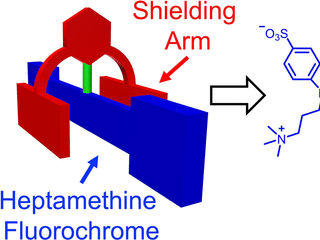World's first fluorescent sensor to detect date rape drug
A team of researchers from the National University of Singapore (NUS) has developed the world's first fluorescent sensor to identify the presence of a drug known as GHB that is commonly used to spike beverages. When the sensor is mixed with a sample of a beverage containing GHB, the mixture changes colour in less than 30 seconds, making detection of the drug fast and easy.
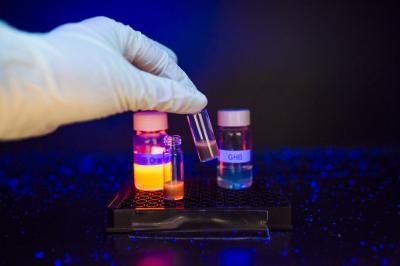
GHB Orange, the fluorescent sensor for detecting date rape drug GHB (bottle in top left), is shown under UV light with the drug GHB (bottle in top right), and when it was mixed into red wine without GHB (vial in front left) and with GHB (vial in front right).
National University of Singapore
This simple mix-and-see discovery, led by Professor Chang Young-Tae of the Department of Chemistry at the NUS Faculty of Science, is a novel scientific breakthrough that contributes towards prevention of drug-facilitated sexual assault problems.
The findings were published in the journal Chemical Communications earlier this year.
GHB: notorious drug used in drink spiking
Gamma-hydroxybutyric acid, commonly known as GHB, is a central nervous system depressant that has been used in the medical setting as a general anaesthetic. In the 1990s, it gained notoriety as a drug allegedly used in instances of drink spiking. Today, it is one of the most commonly used date rape drugs, rendering the victim incapacitated and vulnerable to sexual assault.
As GHB is odourless, colourless and slightly salty, it is almost undetectable when mixed in a drink, thus making it desirable to sexual predators. A small amount of between two to four grams of GHB will interfere with the motor and speech control of a person, and may even induce a coma-like sleep. GHB takes effect within 15 to 30 minutes, and the effect can last for three to six hours. It is only detectable in urine six to 12 hours after ingestion.
Novel fluorescent sensor to detect GHB
Fluorescent dyes have been widely used as sensors for analytical purposes because of their high sensitivity, fast response time and technical simplicity.
Under the supervision of Prof Chang, the team of researchers, comprising Dr Zhai Duanting, a Research Fellow, Mr Xu Wang, a PhD candidate, as well as Mr Elton Tan, a recent graduate, of the Department of Chemistry at the NUS Faculty of Science, screened 5,500 dyes generated from different fluorescent scaffolds. These fluorescent scaffolds have been used to construct the Diversity Oriented Fluorescence Library (DOFL) that was developed by Prof Chang over the last decade.
The team shortlisted 17 fluorescent compounds and further tested them with a wide range of different GHB concentrations. Through this, the team identified that an orange fluorescent compound, coined GHB Orange, changes colour when it is mixed with GHB.
In order to examine the efficiency of GHB Orange, the team tested its detection capability by mixing a small amount of it with samples of various beverages, ranging from alcoholic, non-alcoholic, coloured and colourless drinks, which contain GHB. The test revealed differences in the fluorescence intensity between GHB-free and GHB-spiked beverages. For drinks that are translucent or of a light colour, such as water or vodka, the change in colour can be easily detected with the naked eye. The change in the colour of darker drinks, such as Cola and whiskey, requires the aid of additional lighting to better detect the change.
Remarkably, this detection can be done through a simple mix-and-see process, which takes less than 30 seconds.
Future plans
While GHB Orange has proven to be efficient in detecting GHB in beverages, there is a need to develop a test kit that is convenient for users to use and carry around. Prof Chang and his team intend to work with industry partners to develop a handy and cheap device for GHB detection.
Organizations
Other news from the department science
These products might interest you
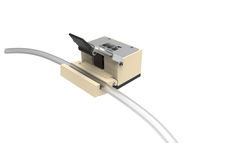
Hose pressure transducer by HiTec Zang
Contactless pressure measurement for sterile applications
Easy-to-install tubing pressure sensors for diameters from 4.8-19.1 mm

FireSting-PRO by PyroScience
New fiber optic measuring device: Precise measurements even in the smallest volumes
Measure pH, oxygen and temperature even under sterile conditions

Get the life science industry in your inbox
By submitting this form you agree that LUMITOS AG will send you the newsletter(s) selected above by email. Your data will not be passed on to third parties. Your data will be stored and processed in accordance with our data protection regulations. LUMITOS may contact you by email for the purpose of advertising or market and opinion surveys. You can revoke your consent at any time without giving reasons to LUMITOS AG, Ernst-Augustin-Str. 2, 12489 Berlin, Germany or by e-mail at revoke@lumitos.com with effect for the future. In addition, each email contains a link to unsubscribe from the corresponding newsletter.
More news from our other portals
Last viewed contents

Stone age hepatitis B virus decoded - Viral DNA shows the hepatitis B virus has been circulating in Europe for at least 7.000 years

Proxygen Announces Strategic Collaboration with Merck to Develop Molecular Glue Degraders
Cellexus Biosystems reports the Granting of Fundamental Technology UK Patent
Basilea Reports Positive Phase III Results for Alitretinoin
